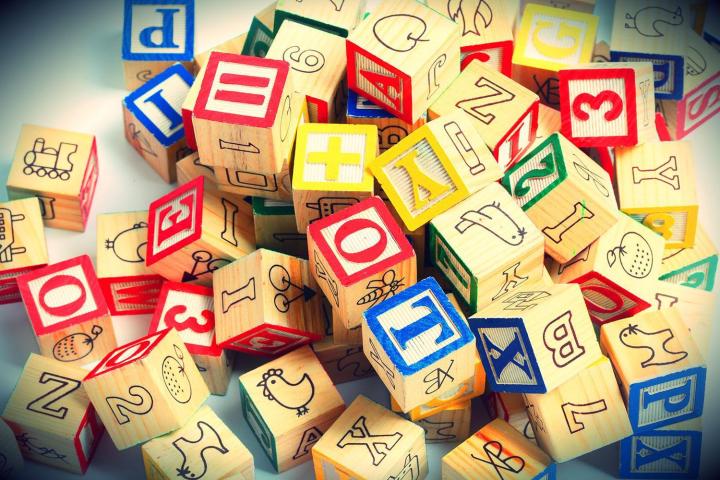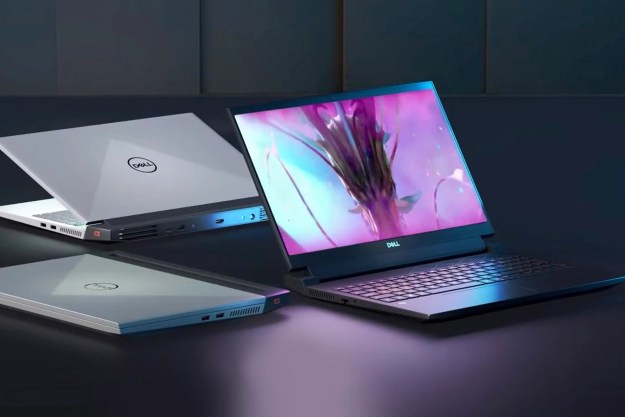
The growth of the company’s empire has been startling, prompting unease over privacy and its ability to control the flow of information in the digital age. It seems that Google’s founders recognize the contentious nature of their colossus, especially given that CEO Larry Page recently announced the company would undergo a dramatic restructuring, with Google and its associated businesses forming a network owned by a new holding company known as Alphabet.
Since the announcement, there has been much speculation about why Google’s leadership would do this. Under Alphabet, subsidiaries such as Google will be run autonomously, with each being able to focus on its own particular business. This would mark a massive shift from the current setup, with Google in charge of a number of diverse companies, some of which are wildly divergent from Google’s core business. Page claims that the move will allow for cleaner operations and more accountability; some experts theorize that the restructuring is an attempt to mollify investors annoyed by Google’s increasingly wild investments.
Regardless of the reason, Alphabet will likely be one of the dominant conglomerates worldwide in the years to come, having inherited Google’s bountiful holdings. Many divisions of Google will also find themselves newly independent. The new landscape might be a bit confusing at first, so those interested in following Google’s business may want to acquaint themselves with the new state of affairs. It’s a bit of doozy.
Choose your department:
- Web-based business
- Medicine
- Investing
- Assorted tech
Web-based business

The most explicit changes so far will happen to Google, which, according to founder Larry Page, will be “slimmed down.” The new Google will focus primarily on Internet and advertising efforts, with many of its former subsidiaries being spun off under the aegis of Alphabet. This seems to include most of the divisions associated with hardware and non-Internet technology, as Page’s statement specifically mentions the X lab, Nest, Life Sciences, Calico, and Wing becoming their own companies. Google’s investment arms will also be separating from the erstwhile mothership.
Google will also be losing its leader, in a sense, as founder and current CEO Larry Page will step up to run Alphabet. Meanwhile, Google’s former product chief Sundar Pichai will step up as CEO. Google seems to be in great hands, though: Pichai was one of the key players in the development of both the Google toolbar and Chrome, two crucial components of the company’s growth. Pichai also oversaw the development of Google apps including Gmail.
Despite all of this, Google is still far and away the largest player in Alphabet’s roster, and certainly the most well-known. So what remains for Google going forward?
- Google Photos: Page specifically mentions Google’s new photo-sharing platform as staying with the company, which makes sense. Photos is an extension of Google’s social network platform, and the reception to the service has been generally positive so far.
- Google Now: Page also indicated that Google Now, an intelligent personal assistant a la Siri, will remain part of the Google brand. Given Now’s integration with Google Search and Chrome, it is logical that it would remain a Google property.
- YouTube: Things are a bit fuzzier here. In the announcement, Page notes YouTube as being one of the more successful ventures under Google, specifically praising CEO Susan Wojciki. This doesn’t give any indication that YouTube would become its own company, but given Google’s focus on Internet and advertising, it seems likely that YouTube will remain under Google proper.
- Android: Google’s popular operating system has been an effective missionary for the brand, bringing Google apps and services to millions of mobile users. There is no reason to think Android will not continue to function as part of Google.
- Google’s various Web-based projects, such as Maps and Chrome, will certainly stay.
- DeepMind: An artificial intelligence company acquired by Google in 2014, DeepMind is researching the nature of intelligence and how to instill learning processes in an AI. As a cornerstone of this research, the company has developed a neural network that can learn to play video games. So far, the AI has demonstrated the ability to learn and improve at basic arcade games such as Breakout.
Given the resources remaining at its disposal, Google should have no worries about its financial future. Advertising through search and YouTube accounted for approximately 89 percent of Google’s revenue last year, so losing divisions like X and Life Sciences — the so-called “moonshot” projects — should hardly make a dent in Google’s finances. If anything, Google may be more efficient from here on; for a company whose revenue came mostly from advertising, eccentric investments like robot cars may have been tough to sell to investors. Unburdened by passion projects, Google should be free to focus on increasing its already titanic revenue stream.
Fiber
Google’s experiment with high-speed Internet service has been one of its most high-profile projects since launching in 2010, inspiring towns across America to go to bizarre lengths to become Google Fiber test cities. Hell, Topeka went so far as to temporarily dub itself “Google” in hopes of attaining Fiber. It’s not surprising how fervent people’s attractions are, given speeds up to a gigabit (1Gb, or 1,000 Mb) per second. For comparison, the average connection speed in the United States is 8.7 Mbps.
Currently, Fiber is operating in three cities: Kansas City, Austin, and Provo, Utah. The company plans to expand to six more cities in the coming year, the largest of which will be San Antonio. As with many of the Alphabet companies, it remains to be seen what effect the restructuring will have on Fiber. The company has maintained a fairly conservative reach so far, but if its business model proves to be effective, it wouldn’t be strange to see the company spread nationwide. Traditional broadband services have become targets of irritation and lampooning in recent years due to their monopolistic tendencies and lackluster service. If Fiber is successful, it could shake up the entire industry.
Next page: Medicine
Medicine
Life Sciences
Previously a division of the enigmatic Google X lab, Life Sciences is dedicated to developing new technologies to improve healthcare, and will become its own company under Alphabet. The mantra provided by Life Science’s new CEO, Andrew Conrad, is ambitious: “Our foe is death.” A bold goal, considering it’s a war humans have been waging since the time of Gilgamesh. Advances in medical technology have thwarted many of the dangers that historically cut lives short, and Life Sciences aims to push the field of medicine into the realm of science fiction.
The initial project that put Life Sciences on the map was a smart contact lens, which uses minuscule computing to measure and evaluate biometrics such as blood sugar levels. Since then, the team has also begun research into nanomachines and a comprehensive study of human genetics called the Baseline Study. Through Baseline, the company has been amassing data on thousands of people, hoping to find common genes in people who tend to get sick less. It is an ambitious effort typical of the Google empire, and one that could reap huge rewards for medical research.
Life Sciences is a forward-looking company, and for the most part, its projects exist in the imagination. There is no telling which efforts, if any, will bear tangible fruit. At the very least, the scope of Life Sciences’ research has attracted other biomedical companies interested in collaboration. In August, Life Sciences announced a partnership with DexCom — a manufacturer of glucose measuring devices — to design smaller, less obtrusive products.
Calico
One of the newer and more mysterious companies in the Alphabet collective, Calico — short for California Life company — is an R&D lab focused on biomedical research. Unlike the more generalized approach of Life Sciences, Calico maintains a specific focus, exploring the physiological process of aging, with the distant goal of finding a way to stop it. Calico’s mission statement emphasizes the interdisciplinary nature of such a project, and it’s been quietly forming partnerships with a variety of labs and companies in order to tackle humanity’s oldest problem.
Calico was founded by Arthur Levinson, a National Medal of Technology and Innovation recipient, and the core team comprises a small but experienced group of researchers. In the company’s short existence, Calico has been relatively assertive about collaborating with other institutions to research going. It has partnered with AncestryDNA, a consumer genetics testing firm, to evaluate a database of millions of genetic samples and find families with particularly long lifespans. This data could be a means to create therapeutics to combat aging. Other partners include the University of Texas Southwestern Medical Center, the Broad Institute of MIT, and Harvard.
Next Page: Investing
Investing
Capital
Originally an investment wing of Google, this company was referred to in the Alphabet announcement simply as Capital, which will presumably be its name going forward. The company is designed to provide investments to businesses in the latter stages of development, using both its financial resources and a culture of experienced entrepreneurs to help spur growth in portfolio companies. Whereas Ventures takes risks on startups, Capital invests in companies that have already built their foundations and are ready to experience growth.
Capital’s focus is on tech and Web-based enterprises, and so far it has assembled quite the portfolio. Capital-funded companies include the likes of SurveyMonkey (purveyors of online surveys), Credit Karma (a credit-tracking site), and Glassdoor (a site that provides reviews of companies by current or former employees).
Ventures
One of Google’s two investment arms, Ventures provides seed money to new companies. In addition to venture capital, Ventures supplies companies with operational help. In the past, this has meant that portfolio companies have had access to Google executives and engineers for help solving problems and optimizing production. It is unclear how tight this relationship will remain in the future, but given that Venture and Google will still be members of the same family tree, there is currently no reason to believe Google personnel will not remain available to assist Venture’s portfolio companies.
Ventures takes an active role in the growth of its prospects, employing a five-day process called a “design sprint” to help young companies work through important decisions quickly. The sprint involves rapid brainstorming, prototyping, and testing to solve issues early. Ventures’ approach to investing has so far been quite successful. Among its portfolio companies are Uber (the now-ubiquitous driving service), Slack (a popular messaging platform), and Nest (a company that designs automated appliances).
Next Page: Assorted Tech
Assorted tech
X
Of Google’s many side-projects, Google X was probably the most exciting and mysterious. Beyond the bizarre name, the X lab was responsible for many of Google’s most impressive projects, including the infamous Google Glass, a head-mounted display designed to resemble glasses. Glass allowed people to perform computing tasks hands-free, and its ability to record video led to a widespread debate about privacy and the etiquette of using Glass to record people without their knowledge. In 2015, Google announced that it would halt production on the then-current model of Glass, but maintained that the project would be revived in some form or other.

With X —as Page referred to it in the Alphabet announcement — becoming independent of Google, the future of Glass remains up in the air. However, X still touts a number of other projects that it has been working on, any of which could change society. Many of the projects have often inspired controversy, and besides Glass, the most controversial so far has been the self-driving car. The autonomous vehicle is compact and uses an array of sensors to detect nearby objects and avoid collisions, and supposedly, it can “see” as far as two football fields. Devoid of any of the features that normally allow a person to drive a car, such as a steering wheel or pedals, the car relies entirely on computers to perform every function. This presents a few problems in terms of safety and legality, but if the technology becomes refined enough to be as safe or safer than cars driven by humans, we may see laws and attitudes changing to accept robot cars.
Nest

As one of Google’s big acquisitions in 2014, Nest produces “smart” appliances for homes, building computer systems for each device to integrate with. It’s a process known as home automation, which aims to make the various aspects of domestic life easy to navigate through information technology. To unite all of its devices within a single platform, Nest created a titular app that allows users to control every Nest item in their house directly from a smartphone. Nest’s first big project was the Nest Learning Thermostat, a Wi-Fi enabled thermostat that can automatically regulate heating and cooling in buildings to make optimal use of energy.
Nest has also developed the Protect, a smoke detector that features a “friendly human voice” that will provide early smoke warnings, and can tell users exactly where in the house the smoke is located. The Protect can also transmit said information to your phone through the Nest app, which you can then use to conveniently silence the warnings. To provide the most convenience possible, the Protect also tests its own batteries and sensors.
Recently, Nest developed the Nestcam, a small HD camera that can detect motion, lights, and sounds. Moreover, it can alert you via your phone if something is going on. Nest touts the camera as being able to distinguish between mundane sights and sounds (like traffic or shadows) and more noteworthy events such as a loud noise or a person approaching. Like other Nest products, the Nestcam can also connect to the Nest app and transmit video and information to the owner’s phone.
Nest is still a relatively young company, but it seem to have a clear goal of automating all the devices in the modern home, and has already released some bold products to that end.
Wing
Aside from their contentious use as unmanned weapons, drones have found a place in society as amusing toys for suburbanites, and, potentially, a method of extremely fast delivery. Companies such as Amazon and DHL, which have business models that rely on shipping products to customers quickly, are developing commercial drones to quickly deliver their products in urban environments. Google, which has its own shopping service and was not content to fall behind its competitors, launched Google Wing to focus on developing its own proprietary drones.
As part of the Alphabet announcement, Page singled out Wing, indicating that it will be its own company after the restructuring. The project has already hit some snares, though. The first attempt was a single-wing model that experienced stability problems and was eventually scrapped. Google was adamant that the program would continue, however, and the Alphabet announcement maintains that confident outlook. Commercial drone technology is still in its infancy, for the most part Wing has been operating in secrecy. Companies in the Google… err, Alphabet… family have always been relentless in their pursuit of new technology, however, so it’s likely Wing will have something to show before long.
Sidewalk Labs
A self-described “urban innovation company,” Sidewalk Labs is still fairly new, having first been announced in June. So far, all that is known about the company is what has been said in its mission statement. Sidewalk hopes to address the growing infrastructure problems in major cities, using modern developments in technology. The problems CEO Dan Doctoroff cites include increased cost of living, inefficient traffic systems, and increasing energy usage. In this sense, Sidewalk seems to fit in with the rise of Neo-futurism, an architectural movement whose proponents hope to build buildings and cities that integrate technological advances to improve quality of life.
At this point, the specifics of Sidewalk’s plans are unknown. Most recently, Sidewalk acquired a company called Intersections, whose members were responsible for the LinkNYC project that established a Wi-Fi network across the five boroughs of New York City to replace the outdated payphone system. The acquisition reflects the scope of Sidewalk’s ambition, and its desire for contemporary solutions to problems. Given the ever-swelling populations of major cities around the world, companies like Sidewalk may be essential to keeping urban life bearable.


